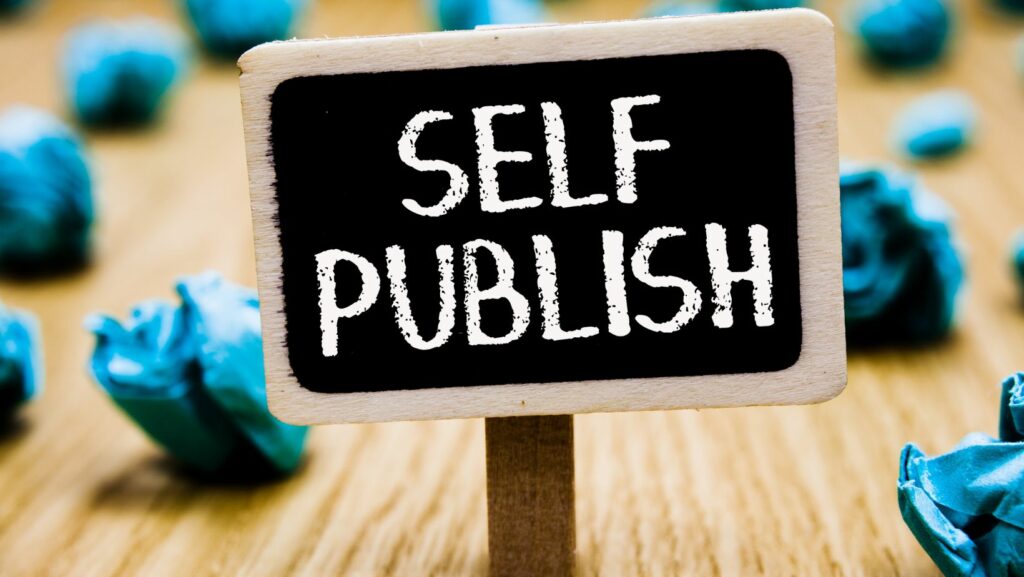Indie vs Traditional Publishing
- Understanding the Publishing Paths: Indie publishing offers creative control and higher royalty rates, while traditional publishing provides established resources and industry expertise.
- Control and Creative Freedom: Indie authors maintain full control over their work compared to traditional authors who must collaborate with publishers.
- Royalty Differences: Indie authors generally earn 60-70% royalties, while traditional authors receive about 10-15%, impacting long-term income.
- Publication Timeline: Indie authors can quickly publish their work, whereas traditional publishing involves a lengthy process that can take months or years.
- Marketing Responsibilities: Indie authors must actively manage their marketing and promotion, while traditional publishers handle these efforts, providing professional support.
- Market Accessibility: Traditional publishing offers broader distribution channels and visibility, while indie authors often cultivate niche audiences through direct engagement.
 The world of publishing has evolved dramatically in recent years, presenting writers with two distinct paths: indie and traditional publishing. Each route offers unique advantages and challenges, making the choice a pivotal moment in an author’s career. Indie publishing empowers writers with creative control and the opportunity to connect directly with readers, while traditional publishing provides access to established resources and industry expertise.
The world of publishing has evolved dramatically in recent years, presenting writers with two distinct paths: indie and traditional publishing. Each route offers unique advantages and challenges, making the choice a pivotal moment in an author’s career. Indie publishing empowers writers with creative control and the opportunity to connect directly with readers, while traditional publishing provides access to established resources and industry expertise.
As more authors explore their options, understanding the nuances between these two approaches becomes essential. Whether it’s the allure of self-publishing or the prestige of a traditional deal, each avenue shapes not just the book but the author’s journey as well. This article delves into the key differences between indie and traditional publishing, helping aspiring authors navigate their choices with confidence.
Overview of Indie vs Traditional Publishing
Indie publishing, often referred to as self-publishing, allows authors to take complete control of their work. Authors can dictate the entire publishing process, from writing and editing to design and marketing. This route offers greater creative freedom, enabling unique voices and niche genres to thrive without conventional constraints.
Traditional publishing involves established publishing houses that manage the production and distribution of books. Authors typically submit manuscripts to agents or publishers. Successful submissions lead to contracts that cover editing, marketing, and distribution. Traditional publishing provides authors access to expert resources and networks, often resulting in higher visibility and credibility in the market.
Key Differences
- Control: Indie authors retain total control over their work, whereas traditional authors relinquish some creative authority to the publisher.
- Royalties: Indie publishing typically offers higher royalty rates, often between 60-70%, while traditional publishing usually provides around 10-15% royalties.
- Time to Publication: Indie authors can publish their work quickly, sometimes within days. Traditional publishing can take months or years, from proposal acceptance to final release.
Accessibility and Resources
Indie publishing requires authors to manage various aspects of their book, including formatting, distribution, and marketing. This model necessitates a strong understanding of self-promotion and industry trends. Traditional publishing provides established infrastructure, offering authors professional editing, design, and marketing support, thereby enhancing the overall product quality.
Market Reach
Indie authors often focus on developing their niche audiences through direct engagement via social media and email marketing. Traditional publishers leverage wide distribution channels, gaining access to bookstores and libraries that may be less reachable for indie authors. The choice between these paths affects an author’s audience development strategy.
Advantages of Indie Publishing
Indie publishing offers several notable advantages, empowering authors in various ways. From creative control to financial potential, indie authors can forge their own paths in the literary world.
Creative Control
Creative control remains a primary benefit of indie publishing. Authors maintain ownership of their content, including plot, characters, and cover design. This autonomy allows for the exploration of unique themes that might not align with traditional market trends. Authors can make timely revisions without external constraints, resulting in a truly personalized product. Ultimately, indie authors can engage with their audience’s preferences directly, shaping their narratives based on reader feedback.
Financial Potential
Financial potential represents another significant advantage. Indie authors typically receive higher royalty rates, ranging from 60-70%, compared to traditional authors’ rates of 10-15%. This difference can add substantial revenue for successful indie titles. Additionally, authors retain all rights to their work, allowing them to capitalize on licensing and merchandising opportunities. Indie publishing also eliminates upfront costs commonly associated with traditional publishing, making it easier for authors to reinvest earnings into future projects.
Advantages of Traditional Publishing
Traditional publishing offers several advantages, particularly in terms of resources and industry connections that can significantly benefit authors.
Established Distribution Channels
Traditional publishers possess extensive distribution networks that enhance a book’s reach. Publishers often have established relationships with bookstores, libraries, and online retailers. These connections facilitate broader market access, ensuring that books appear in prominent locations. Traditional publishing also includes effective sales and marketing strategies designed to boost visibility. Publishers handle logistics, enabling authors to focus on writing.
Professional Support
Professional support stands out as a critical advantage of traditional publishing. Editors, designers, and marketers employed by publishing houses provide valuable expertise. Collaborating with professionals helps ensure high-quality manuscripts through rigorous editing processes. Additionally, graphic designers create eye-catching covers that attract potential readers. Marketing teams implement campaigns that promote books effectively, leveraging their knowledge of industry trends. Traditional publishing provides authors with a level of guidance that can greatly enhance their chances of success.
Challenges of Indie Publishing
Indie publishing presents several challenges that authors must navigate to achieve success. Key difficulties include market saturation and the overwhelming marketing responsibilities that come with self-publishing.
Market Saturation
Market saturation poses a considerable challenge for indie authors. With the ease of self-publishing, thousands of new titles appear monthly, increasing competition. Authors must find ways to differentiate their work to capture reader attention. Niche targeting becomes essential, and unique marketing strategies may involve identifying specific interests and engaging directly with intended audiences. Maintaining an online presence through social media and author websites can further enhance visibility amidst the crowded landscape.
Marketing Responsibilities
Marketing responsibilities often consume a significant portion of an indie author’s time and resources. Unlike traditional publishers that manage marketing efforts, indie authors handle this aspect independently. Effective marketing strategies entail creating a solid platform, building an email list, and employing advertising techniques like Amazon ads and social media promotions. Authors must also engage with readers through various channels, including book signings, podcasts, and virtual events, to foster direct relationships. Collaborating with bloggers and influencers can amplify reach, though it requires ongoing effort to establish and maintain connections.
Challenges of Traditional Publishing
Traditional publishing presents several challenges for authors, particularly in terms of time commitment and financial returns. These hurdles can impact an author’s overall publishing experience.
Lengthy Process
Traditional publishing often involves a lengthy process, encompassing multiple stages. Manuscript submission requires significant time, as authors may wait weeks or months for responses from agents or publishers. Following acceptance, additional rounds of editing and production can extend the timeline, sometimes stretching for years before a book reaches shelves. Publication schedules are frequently set well in advance, making it difficult for authors to respond to market trends or timely topics.
Loss of Royalties
 Authors in traditional publishing typically encounter reduced royalty rates. Standard royalties range from 10-15%, significantly lower than the 60-70% often earned by indie authors. Traditional publishing agreements may include complex terms that further limit earnings, such as rights reversion clauses, which could diminish an author’s potential income over time. The financial benefits of traditional publishing can diminish in light of these constraints, impacting authors’ long-term profitability and control over their work.
Authors in traditional publishing typically encounter reduced royalty rates. Standard royalties range from 10-15%, significantly lower than the 60-70% often earned by indie authors. Traditional publishing agreements may include complex terms that further limit earnings, such as rights reversion clauses, which could diminish an author’s potential income over time. The financial benefits of traditional publishing can diminish in light of these constraints, impacting authors’ long-term profitability and control over their work.
Indie Authors Must Navigate a Crowded Market and Take on Marketing Responsibilities
Choosing between indie and traditional publishing ultimately depends on an author’s goals and preferences. Indie publishing offers unparalleled creative freedom and higher royalty rates, appealing to those who want to maintain control over their work. On the other hand, traditional publishing provides valuable industry resources and established networks that can enhance visibility and credibility.
Both paths come with their own set of challenges. Indie authors must navigate a crowded market and take on marketing responsibilities, while traditional authors face longer timelines and lower financial returns. Understanding these dynamics empowers writers to select the route that aligns best with their vision and aspirations in the ever-evolving publishing landscape.



